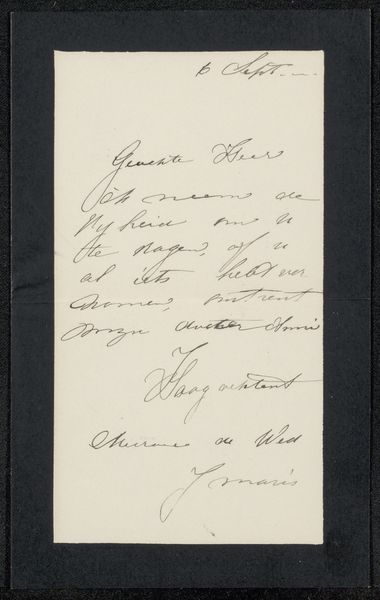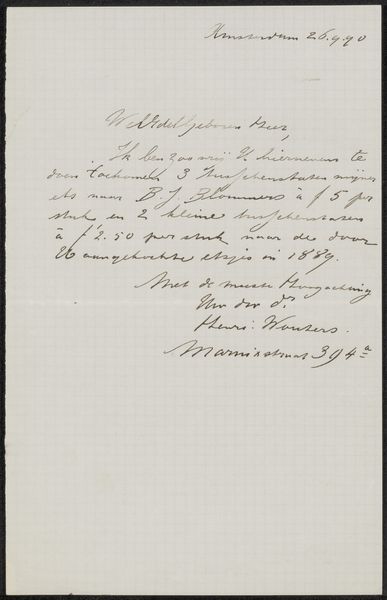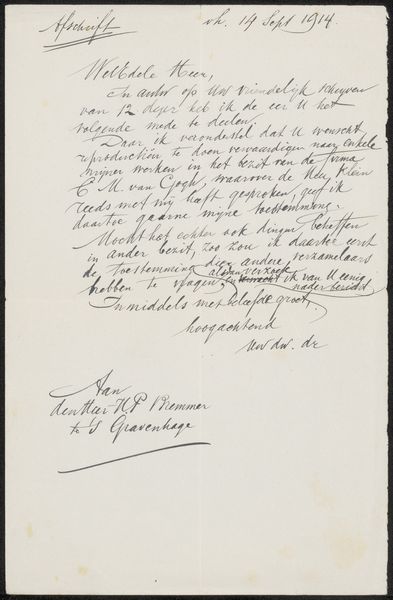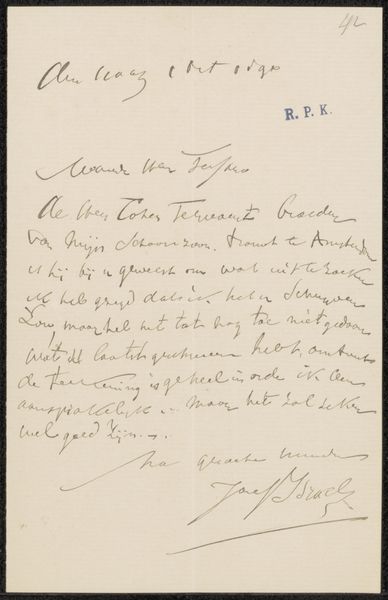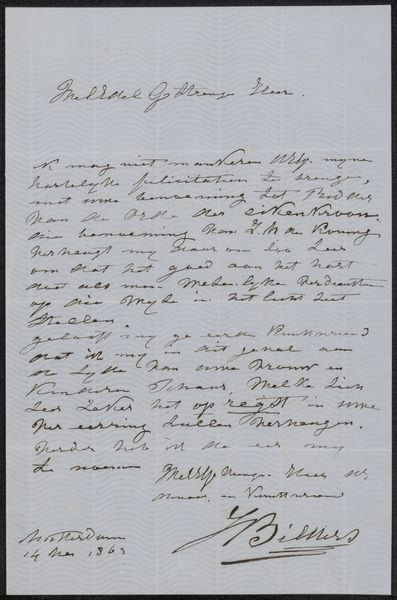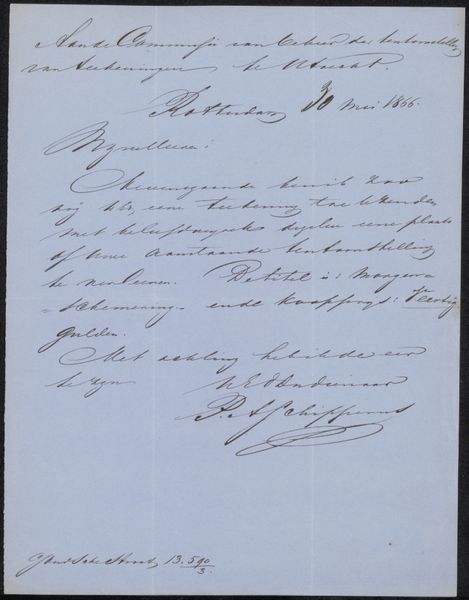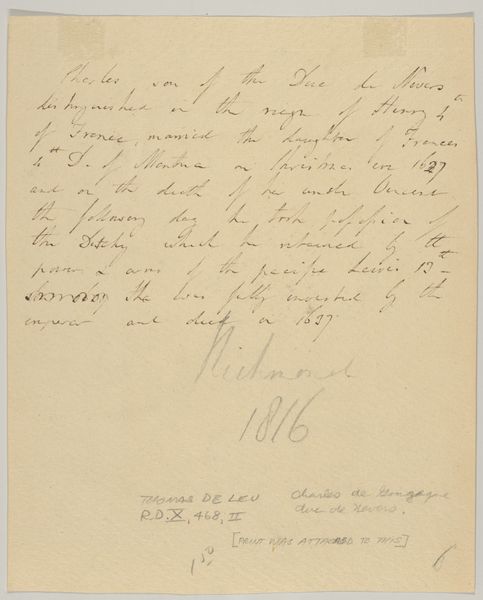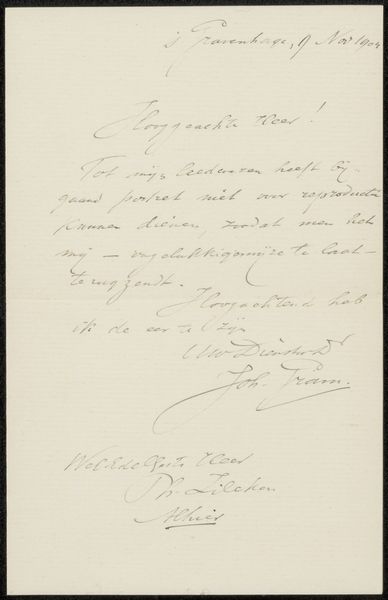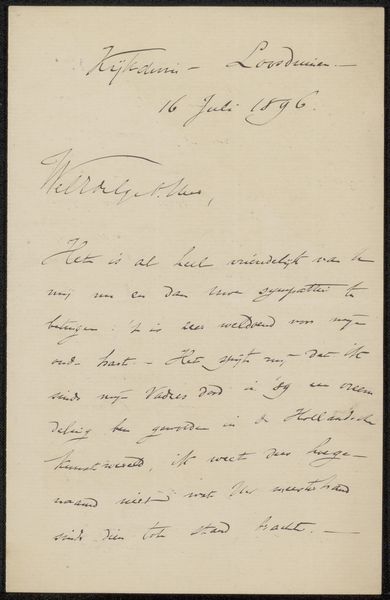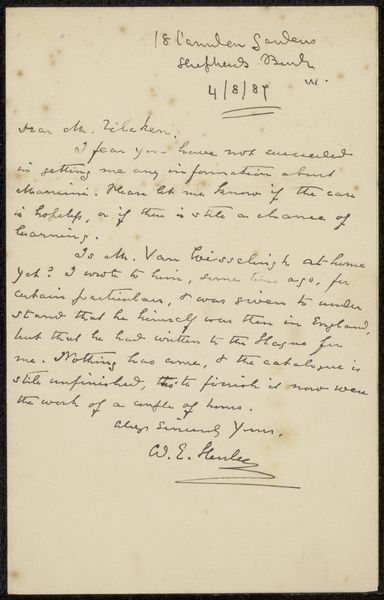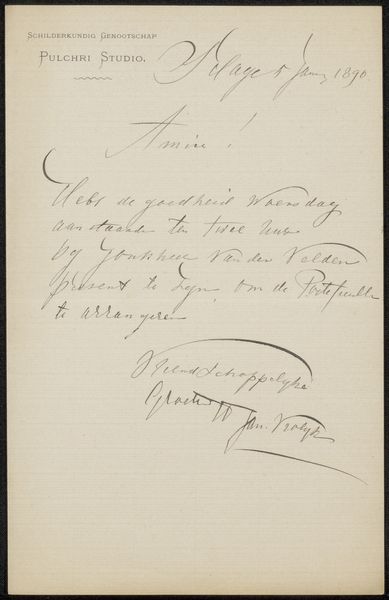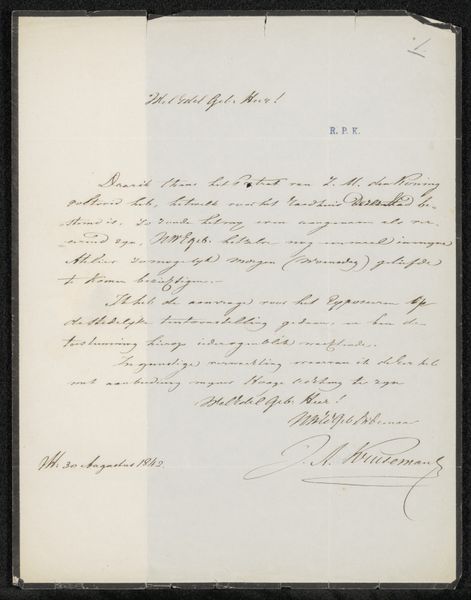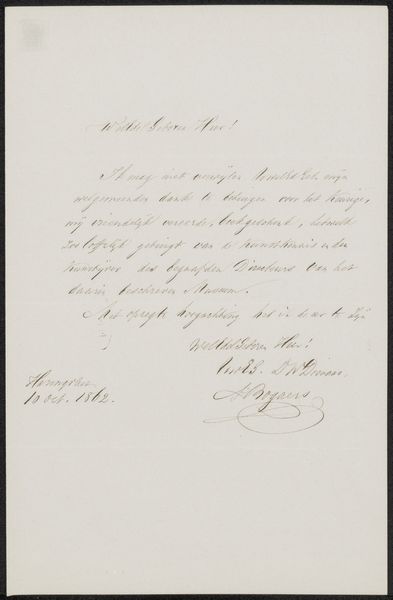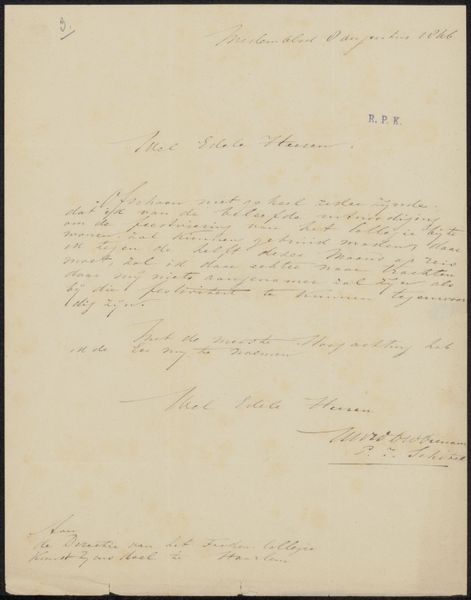
drawing, print, etching, intaglio, paper, ink, ink-drawings, pen
#
portrait
#
drawing
#
script typography
#
hand-lettering
# print
#
etching
#
intaglio
#
hand drawn type
#
typography
#
hand lettering
#
paper
#
ink
#
hand-drawn typeface
#
fading type
#
ink-drawings
#
france
#
water
#
typography style
#
pen
#
experimental typography
#
small lettering
Dimensions: 137 × 211 mm
Copyright: Public Domain
Curator: What a fascinating work we have here by Charles Meryon, titled "Receipt," created in 1865. It is an etching on paper, showcasing Meryon’s mastery of intaglio. Editor: At first glance, it appears purely utilitarian—almost cold in its functional design, until you begin to trace the delicate lines, the almost obsessive neatness. There’s a stark, linear elegance about it, even in its mundanity. Curator: The piece certainly exists at the intersection of art and commerce. Consider Meryon's process: the careful scoring of the plate, the corrosive action of the acid, the physical act of printing—all labor manifested in the final product, this "receipt." It speaks volumes about the artist's engagement with his means of living. Editor: I'm more captivated by the form itself. The precision of the lines, the careful balance between the text blocks, and negative space; it has an undeniable aesthetic presence, even without considering its function as a financial document. Curator: Precisely, yet the context cannot be divorced from its inherent worth. We must view it within the economy of artistic production, distribution, and, ultimately, consumption in 19th-century France. Whose hand received this document, and under what circumstances? This information can illuminate the economic dynamics shaping artistic labor during the era. Editor: But, wouldn't you concede there's an inherent beauty in the calligraphy itself? Look at the way each letter interacts with the others, forming a unified whole that transcends mere function. It is the formal arrangement that grants the piece its power. Curator: Indeed, and those very formal qualities helped commodify and circulate the document! These details shaped not just its look but its legitimacy within societal exchanges, linking art production to broader economic flows. Editor: A valid point! But let us also not underestimate the purely sensory and aesthetic engagement with it. Curator: Ultimately, it's about the tangible convergence of artistic expression and socio-economic history. Editor: Absolutely! It's been enlightening to consider the "Receipt" through both of our lenses.
Comments
No comments
Be the first to comment and join the conversation on the ultimate creative platform.
